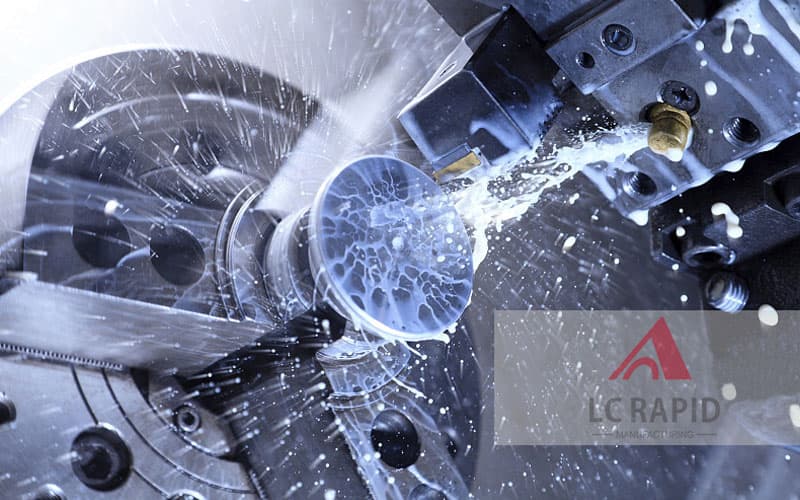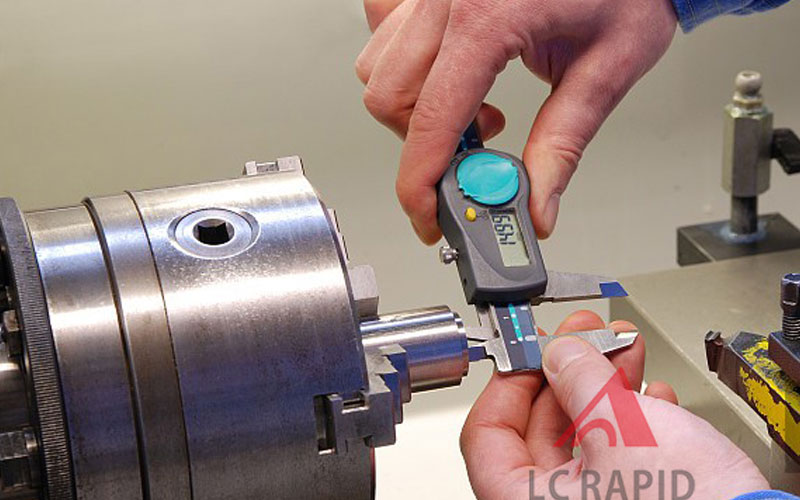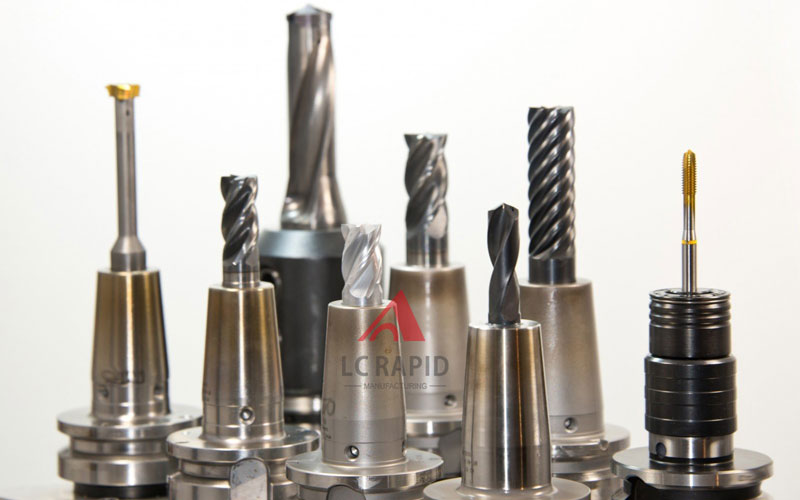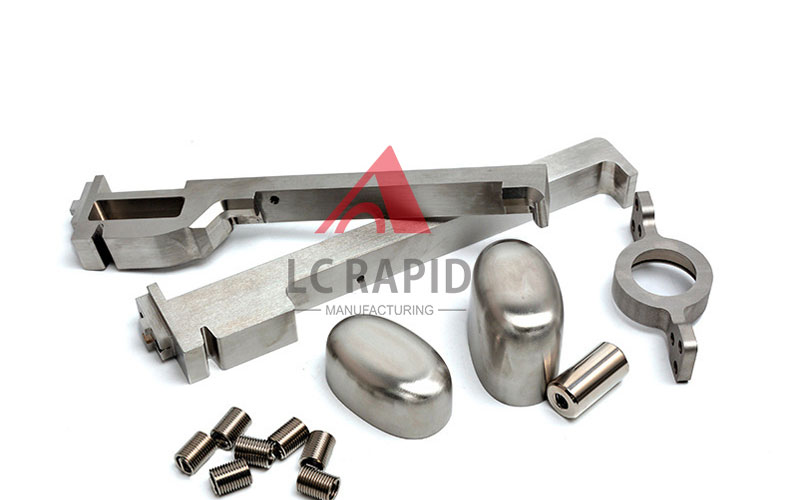+86-18898486814
sales@lcrapid.com
When pricing CNC machining parts, the biggest cost driver is machining time. It can exceed setup costs, material costs, and even custom surface treatments such as plating and anode oxidation.
Therefore, the secret to reducing the cost of CNC precision machining is to keep processing time as short as possible. One of the best ways to implement this requirement is through a process called manufacturing design.
The more engineers optimize their design to reduce cutting time, the more economical their components will be.
To help you improve economic efficiency, there are 10 tips for reducing CNC processing costs that you can use in your project.

1. Avoid the deep pockets
Parts with deep internal cavities are usually expensive and time-consuming to manufacture.
Because these designs require fragile tools and are prone to breakage during machining.
To avoid this situation, you must "step-by-step" down line-up in smaller increments to meet the desired specifications, or other forms of processing, such as line EDM, can be used.As a good practice, we suggested parts up to 4 times the length. Anything better than this, manufacturing costs multiply.
2. Optimise threaded holes
When it comes to threaded holes, two factors that can increase costs are hole depth and tapping size.
In general, adding the length of the thread in the hole does little effect on keeping the bolts tighter. It's also the first two or three rounds to do all the work. Therefore, you do not need to thread the hole to more than 3 times the diameter of the hole (keep it shorter if possible). Deeping only increases the risk of tap breakage and increases the time it takes to tap.
In addition, the use of standard tap sizes helps to reduce costs. As an example, 4-40 clicks are more common than 3-48 taps, and are usually available. Similarly, escape very small threaded holes if possible. Anything less than 2-56" requires a manual tap, which adds a lot of risk and time to the process.
3. Limit the use of strict tolerances
In general, some surfaces of a part are critical to its function. The more features in the design that have numerical labels, such as radius, aperture, and chamfer, the higher the cost of manufacturing parts.
To eliminate unnecessary costs, it is critical to assign values only to mission-critical features and surfaces. Other less important features should be controlled by the model (standard tolerance is ./- 0.005). "
Also, try to define a single baseline, such as the intersection or center of a hole on both sides, from which everything else is labeled.
At LCRapid, our typical tolerance accuracy range is 0.005" to 0.001", depending on customer specifications.


4. Use standard drill sizes
Keep the hole size at the standard decimal, number, and alphanumeric drill size. In this way, you don't need end millors or reamers to complete hole sizes to non-standard sizes. It helps you save the machine time to reduce the costs.
If you are not familiar with the drill and end mill sizes, you can safely assume that regular one-inch fractions (such as 1/8”, 1/4” or whole millimeters) will be “standard”. Avoid measurements such as 0.492” or 3.841 mm.


5. Use of cheaper materials
Generally, softer metals are more expensive than hard materials for the following reasons:
In most cases, raw materials are more economical.
Softer materials, such as aluminum 6061, are easier to cut, which means less processing time.
Harder materials also require more expensive tools they are more likely to destroy and wear tools, which increases project costs.
If materials such as aluminum 6061 are too soft for your parts, you can look for more processable, low-carbon steel to make your parts.
6. Expand the thin wall
Thin CNC parts tend to vibrate, which slows down the processing. They can cause distortion, making it difficult to maintain tolerances. The result may be additional costs.
In order to maintain low processing costs, the minimum width of the thin wall should be 1/32" (0.794mm).
If very thin walls are required, it is usually more economical to use other manufacturing methods, such as sheet metal manufacturing.
In the light of surface smoothness, it is good to either keep it open or require uniform finish. If you are in doubt, it can be useful to explain the functionality of the part to the project manager.
7. Fillet Inner Angle - 3:1
CNC machining tools, such as end-mill or milling cutters, automatically hold fillets within corners. The wider this radius, the fewer passes required for the tool to remove the material.
In contrast, narrow inner angular radii require small tools to machine materials, requiring more passes (usually at a slower rate to reduce the risk of deflection or tool breakage) resulting in more machining times.
For the best design, use a ratio of 3:1 or less (length and diameter) with an internal angular radius of L:D. Also, if possible, try to keep the inner angular radius unchanged. This helps eliminate tool changes, increasing complexity and significantly increasing runtime.
8. Split complex parts
In some ways, complex parts are cheaper if they are designed to be individual parts and machined and then welded or bolted together.
It is especially true for parts which with deep pockets, as the removal of material requires hours of machining time, in addition to additional material costs.
The same is true for parts that need to be operated on multiple faces, which increases the retention and setup time.


9. Avoid multiple completions
This applies to surface roughness and texture, as much as to change the appearance of the finish, such as anode oxidation and chemical films (sometimes called chromate).
Mixing and matching adds a lot of cost. As an example, multiple processing steps can be added by requesting that the anode oxidation and chemical film complete on the part be mixed. The same applies when specifying smooth finish in one area and when a bead explosion is specified elsewhere.
10. Order a large quantity
However, modern CNC milling machines can operate efficiently in combination with a variety of operations, they still require programming and setup to provide services like aluminium milling service.
Ordering multiple quantities of the same parts helps increase productivity and reduce costs per unit.
CNC machining provides the highest cost-effectiveness during the production phase (up to 10,000 parts).